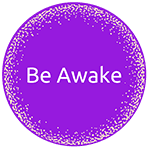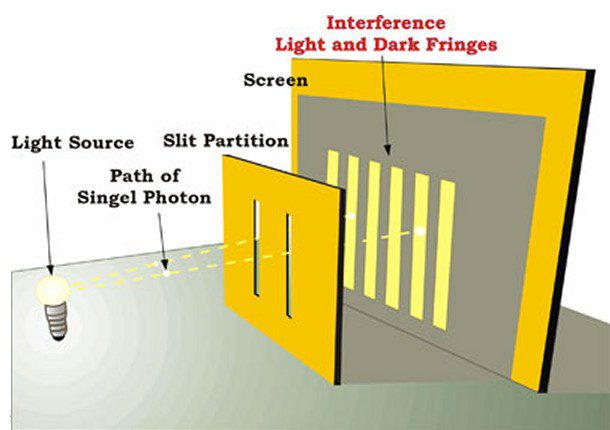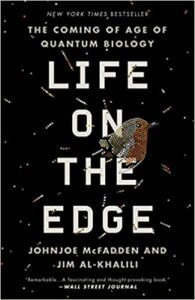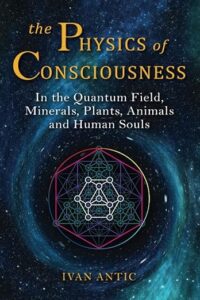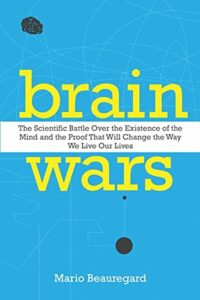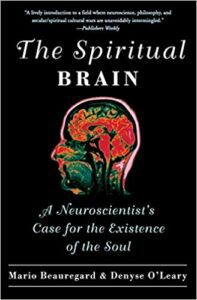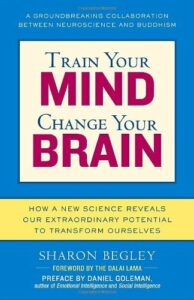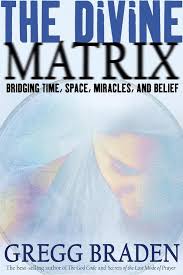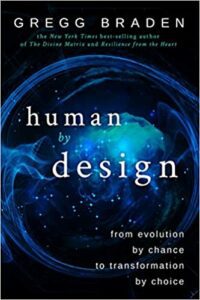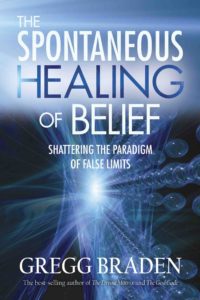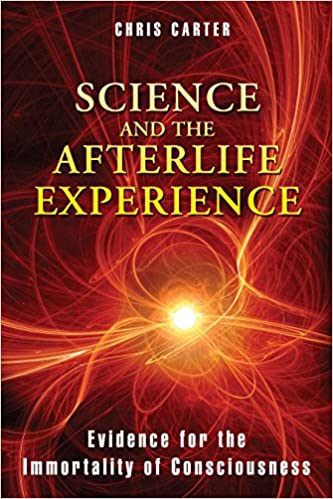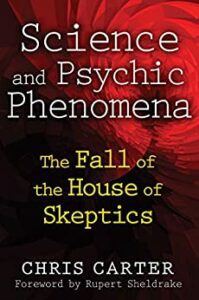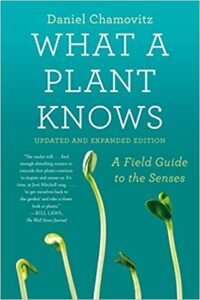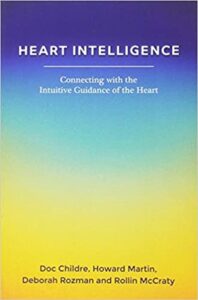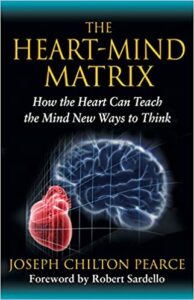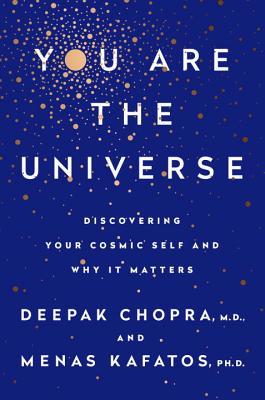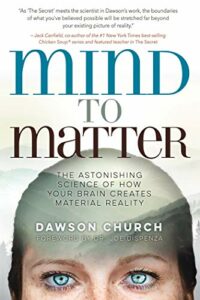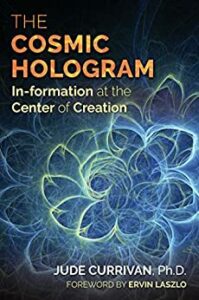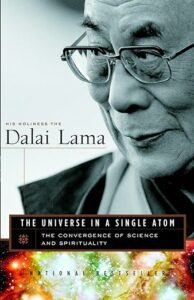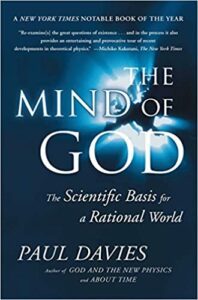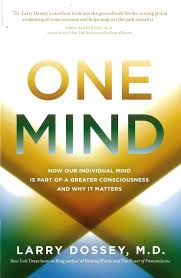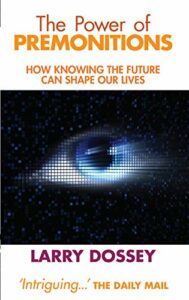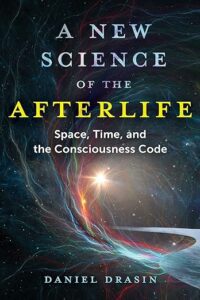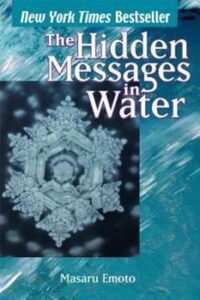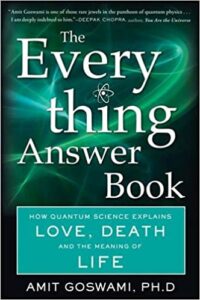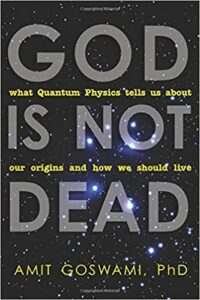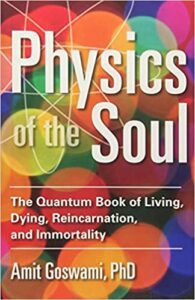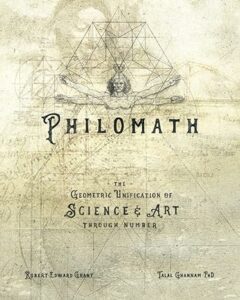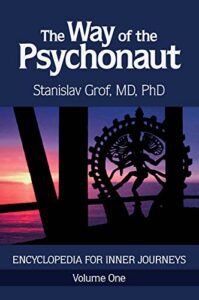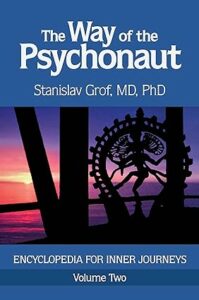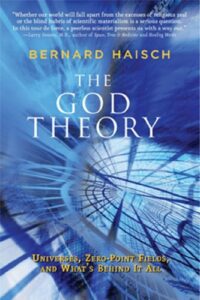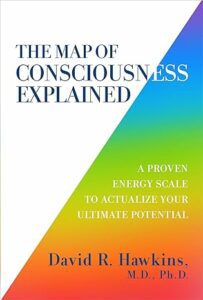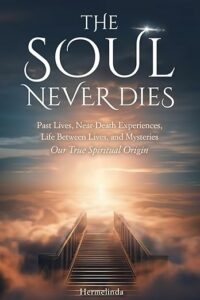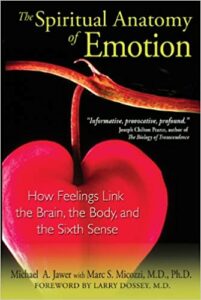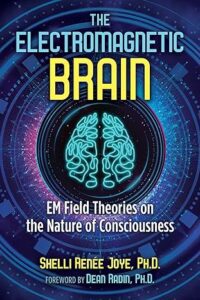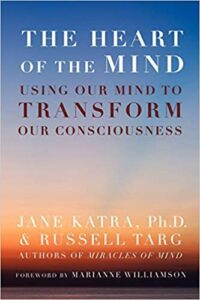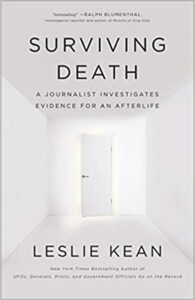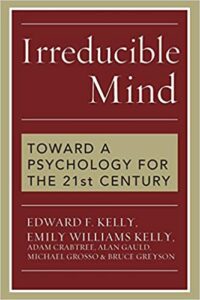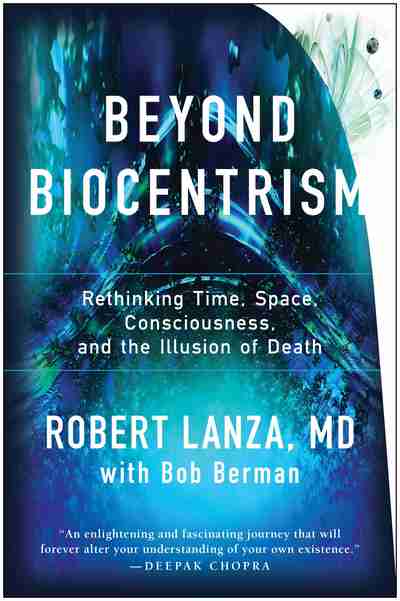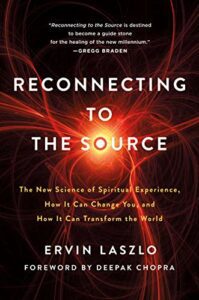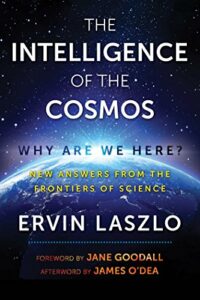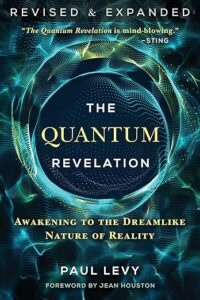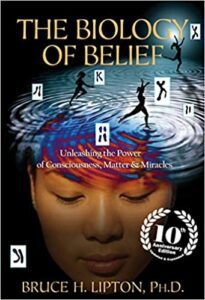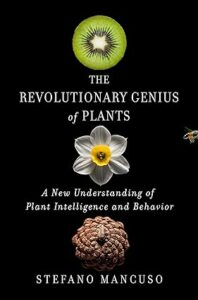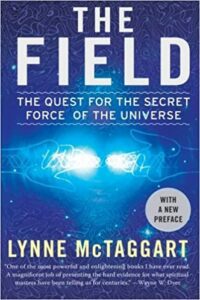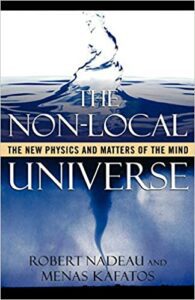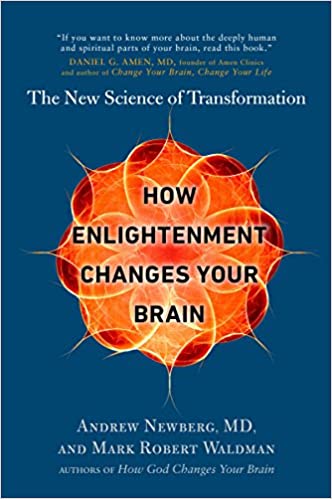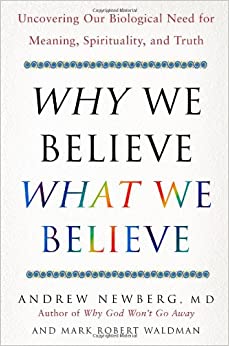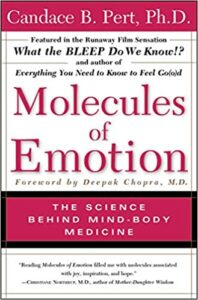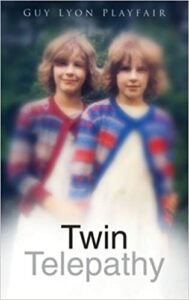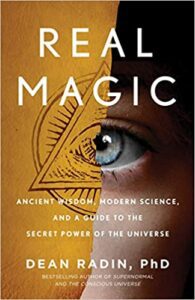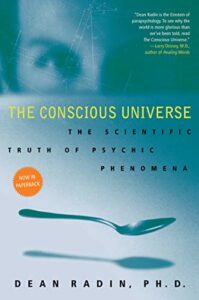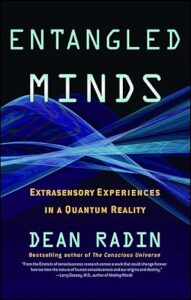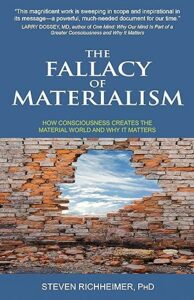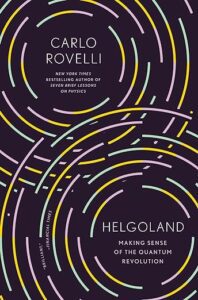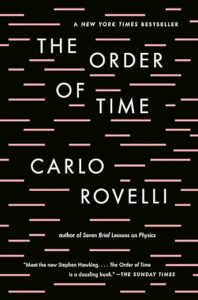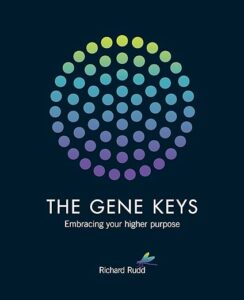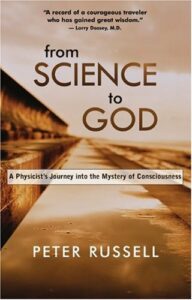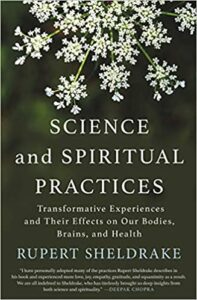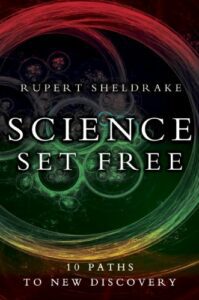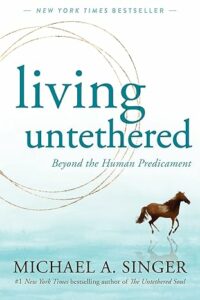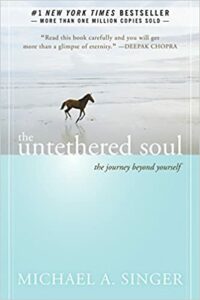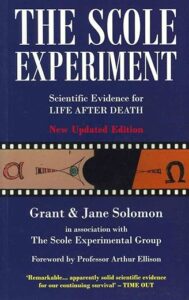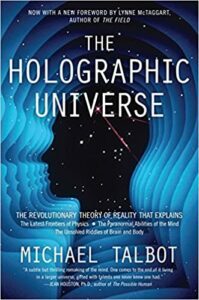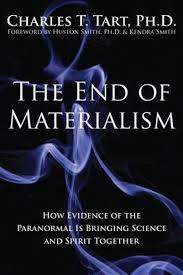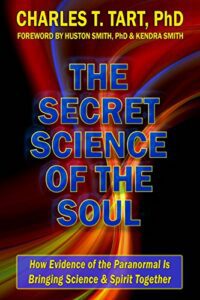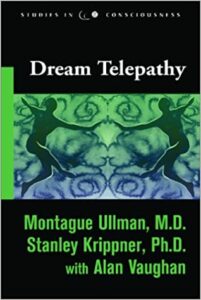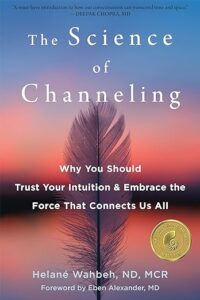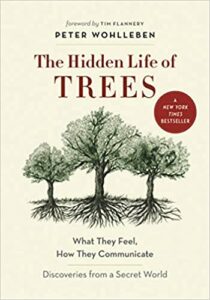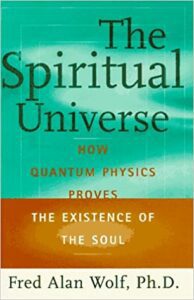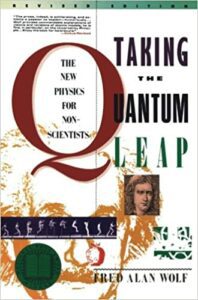Science of Consciousness
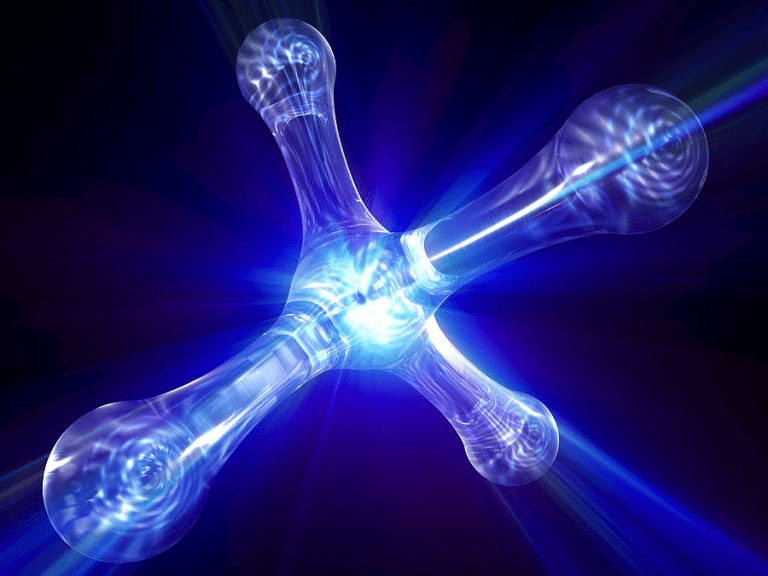
Comprehending consciousness is perhaps the most profound mystery currently facing humanity. The realm of science is vast; however, the focus here is on research about consciousness. Modern science began in the 17th century when Galileo, the father of modern science, discovered that the earth revolves around the sun. Later, Isaac Newton, one of the most influential scientists of all time, published his law of universal gravitation. Both of these men were widely known for their belief in God. By the nineteenth century, however, mainstream science had become locked into the materialistic paradigm.
Materialism maintains that anything that is not material cannot exist. Materialism purports, without evidence, that consciousness is produced by the brain, and when the brain stops functioning, consciousness ceases to exist. Materialism is a false, dogmatic belief system that cannot be proven. Ivan Antic, author of The Physics of Consciousness, recognizes that scientific materialism is a false paradigm, “Physics as science will reach its ultimate peak through understanding consciousness.”
In the last century, experiments in quantum mechanics showed that matter exists as probabilities and tendencies rather than absolute things; all matter is made up of atoms and molecules that are in constant motion. Matter is energy vibration rather than actual solid material. Everything is energy, and everything is connected to everything else.
We learned in school that matter is made up of molecules consisting of atoms. Atoms consist of a nucleus with electrons circling around the nucleus. We think of these elements as separate particles. However, appearances can be deceptive. It turns out that solid matter is less solid than it appears. Scientists have calculated that your body is 99.99999999% empty space. So why do things feel solid if everything is energy?
Our electrons are everywhere at once, filling up space with their wave functions. The reality is that nothing is solid and you have never truly touched anything made of solid matter in your life. It is an illusion. It is all simply energy waves.
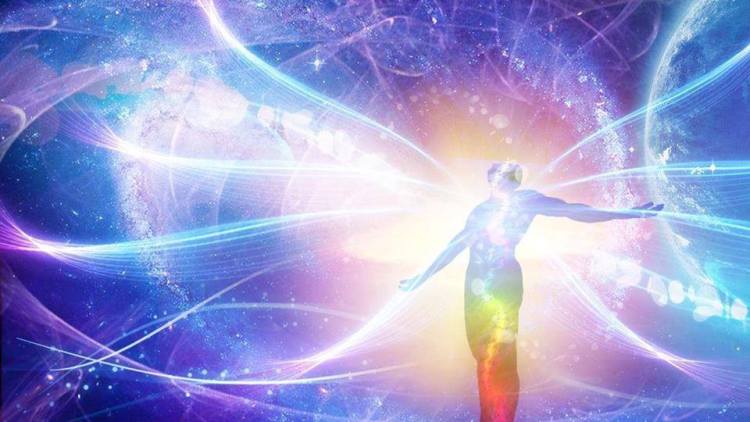
Given that everything is energy, the materialism paradigm has missed the mark. The following introductory video illustrates the energetic reality: Everything Is Energy (3:20 minutes)
Hungarian philosopher of science and systems theorist, Ervin László, who was twice nominated for the Nobel Peace Prize, summarizes the energetic nature of reality as follows, “The universe is not a domain of matter moving in space and time; It is a sea of coherent vibrations.” (The Intelligence of the Cosmos: Why Are We Here? New Answers from the Frontiers of Science).
The Role of Consciousness
Consciousness plays a fundamental role in determining our reality. This principle has been recognized by some of the most prominent quantum physicists:
- Max Planck, a founder of quantum physics, understood that consciousness underlies all matter:
All matter originates and exists only by virtue of a force…We must assume behind this force the existence of a conscious and intelligent Mind. This Mind is the matrix of all matter…I regard consciousness as fundamental. I regard matter as derivative from consciousness. We cannot get behind consciousness. Everything that we talk about, everything that we regard as existing, postulates consciousness.
— Max Planck (1858–1947), Nobel Prize for Physics, 1918 - Another of the founders of quantum mechanics, Werner Heisenberg, recognized the fundamental role of the consciousness of the observer:
Separation of the observer from the phenomenon to be observed is no longer possible.
— Werner Heisenberg (1901–1976), Nobel Prize for Physics, 1932 (for the Creation of Quantum Mechanics) - The prominent physicist, Neils Bohr, also embraced this reality:
The universe may be nothing more than a giant hologram created by the mind.
— Neils Bohr (1885–1962), Nobel Prize for Physics, 1922 (for Contributions to Quantum Mechanics)
The Double Slit Experiment – The Observer Effect
The “observer effect” is the theory that the mere observation of a phenomenon inevitably changes that phenomenon. One of the most famous experiments in physics is the double-slit experiment. It demonstrates, with unparalleled strangeness, that little particles of matter have something of a wave about them and suggests that the very act of observing a particle has a dramatic effect on its behavior.
Aspects of the double-slit experiment (such as the collapse of the wavefunction upon observation) bring into question the possibility of consciousness interacting with matter. Nevertheless, experimental evidence for the interaction of consciousness and matter or the non-locality of consciousness is generally ignored by mainstream science, which limits its investigations to the physical world. The missing link in mainstream science is consciousness. (See Dean Radin, Ph.D., below.)
Scientists believe that non-local consciousness might be modeled by quantum entanglement. Quantum mechanics is a fundamental and well-established theory.
The following video shows the results of many double-slit experiments that suggest that consciousness is an active participant in reality: New Experiments Show Consciousness Affects Matter ~ Dean Radin Ph.D. (41:04 minutes).
Parapsychology science (psi) also supports the existence of nonlocal consciousness. Psi science studies involve parapsychological or psychic ability. Mainstream science does not recognize psi science as being valid because it is outside the materialistic paradigm. Nonetheless, according to Charles T. Tart, Ph.D., there have been thousands of scientifically valid parapsychological experiments carried out over the past 100 years. Dr. Tart authored The End of Materialism; How Evidence of the Paranormal is Bringing Science and Spirit Together. (See his other books listed below).
Dean Radin, Ph.D., covers psi research on telepathy, psychokinesis, clairvoyance, and precognition in this video: “Science and the Taboo of psi” with Dean Radin. Positive research findings have also been reported on topics other than the four covered in Radin’s video. Many of these findings can be found in books referenced in the Scienced-Based Libraries on this resource page and on the following of our resource pages: Energy Healing, Near-Death Experiences, Out-of-Body Experiences, Reincarnation, Mediumship, and Death and Dying.
Mainstream scientists maintain that the brain produces consciousness, and when the brain dies its consciousness dies as well. This is a false belief. Consciousness CAN indeed work without the brain because consciousness is nonlocal. Recently scientists confirmed that a single-celled organism can learn, remember, solve problems and make decisions, all without a brain or neurons. This study, “A Complex Hierarchy of Avoidance Behaviors in a Single-Cell Eukaryote”, was published in Current Biology on December 5, 2019.
Learning by slime molds is described in this video: Heather Barnett: What humans can learn from semi-intelligent slime (12.12 minutes).
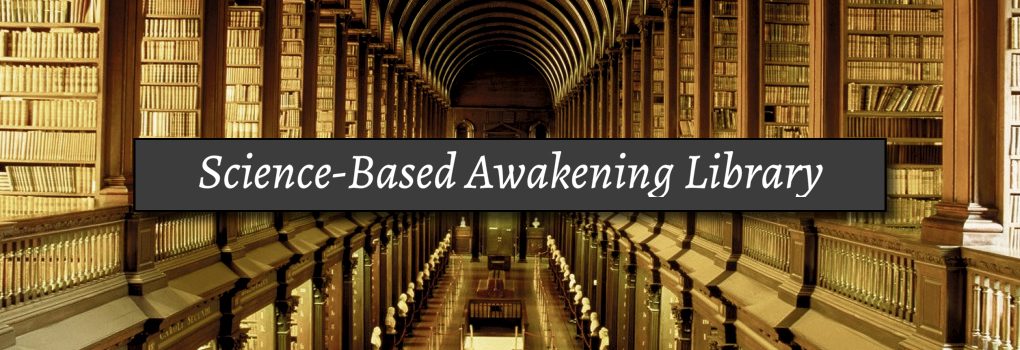
Science of Consciousness Resources
Organizations
- Academy for Spiritual and Consciousness Studies (ASCSI)
The goal of the ASCSI is to support the interchange of ideas that emerge in the interface of the study of consciousness and science.
- Institute of Noetic Sciences (IONS)
The IONS mission is to reveal the interconnected nature of reality through scientific exploration and personal discovery with a focus on understanding humanity’s inherent inner wisdom.
- Science and Nonduality (SAND)
The SAND community offers a range of courses designed to deepen understanding of the nature of reality, consciousness, and the interconnection of all things.
- Scientific Committee to Evaluate PseudoSkeptical Criticism of the Paranormal (SCEPCOP)
SCEPCOP is a coalition of researchers, investigators, and others who counter and expose fallacies spawned by “religious fanaticism, unscientific behavior, misinformation, denial, suppression, bigotry and ridicule toward data, experience or science that challenges orthodoxy or does not fit into a materialistic paradigm.”
- The Rhine Research Center
The Rhine’s mission is to advance the science of parapsychology (psi), to provide education and resources for the public, and to foster a community for individuals with personal and professional interest in psi.
- Society for Scientific Exploration (SSE)
The SSE provides a forum for sharing original research into subjects that often cross mainstream boundaries yet may have profound implications for human knowledge and technology. The SSE publishes a peer-reviewed journal and the popular “EdgeScience” magazine, hosts conferences, and connects scholars.
Video Presentations
- Everything Is Energy (3:20 minutes)
- Heather Barnett: What humans can learn from semi-intelligent slime (12.12 minutes)
- New Experiments Show Consciousness Affects Matter ~ Dean Radin Ph.D. (41:04 minutes)
- “Science and the Taboo of psi” with Dean Radin (1:34:58 minutes)
- Quantum Mechanics for Dummies (21:59 minutes)
- How Trees Talk to Each Other | Ted Talk | Suzanne Simard (18:24 minutes)
Articles on BeAwake.com
Books on Science about Consciousness
Note: Book titles are linked to amazon.com, which offers numerous book reviews.
Al-Khalili, Jim and McFadden, Johnjoe
by Jim Al-Khalili and Johnjoe McFadden, 355 pages (2014)
New York Times bestseller. Both Al-Khalili and McFadden are science professors at the University of Surrey, Great Britain.
Antic, Ivan
The Physics of Consciousness: In the Quantum Field, Minerals, Plants, Animals and Human Souls
by Ivan Antic, 247 pages (2021)
Website: IvanAntic.com
Beauregard, Mario, M.D.
Brain Wars: The Scientific Battle Over the Existence of the Mind and the Proof That Will Change the Way We Live Our Lives
by Mario Beauregard, 250 pages (2013)
The Spiritual Brain: A Neuroscientist’s Case for the Existence of the Soul
by Mario Beauregard, Ph.D., & Denyse O’Leary, 368 pages (2007)
Website: DrMarioBeauregard.com (French language)
Video: Dr. Mario Beauregard: Brain Wars The Scientific Battle Over the Existence of the Mind
Video: Dr. Mario Beauregard Ph.D. The Non Local Mind @ TCCHE 2015
Begley, Sharon
Train Your Mind, Change Your Brain: How a New Science Reveals Our Extraordinary Potential to Transform Ourselves
by Sharon Begley, 283 pages (2007)
Begley is a New York Times best-selling author.
Braden, Gregg
The Divine Matrix: Bridging Time, Space, Miracles and Belief
by Gregg Braden, 223 pages (2008)
Gregg Braden is a New York Times best-selling author of four other books and is the winner of Nautilus Book Awards for seven of his books.
Human by Design: From Evolution by Chance to Transformation by Choice
by Gregg Braden, 289 pages (2017)
The Spontaneous Healing of Belief: Shattering the Paradigm of False Limits
by Gregg Braden, 215 pages (2008)
Carter, Chris
Science and the Afterlife Experience: Evidence for the Immortality of Consciousness
by Chris Carter, 369 pages (2012)
Science and Psychic Phenomena: The Fall of the House of Skeptics
by Chris Carter, 303 pages (2007, 2012)
Science and the Near-Death Experience: How Consciousness Survives Death
by Chris Carter, 256 pages (2010)
Chamovitz, Daniel
What a Plant Knows: A Field Guide to the Senses
by Daniel Chamovitz, Ph.D., 177 pages (2012)
An example of consciousness at work without a brain, plants respond to light, smell, touch, and exhibit different kinds of memory.
Website: DanielChamovitz.com
Childre, Doc
Heart Intelligence: Connecting with the Intuitive Guidance of the Heart
by Doc Childre, Howard Martin, Deborah Rozman & Rollin McCraty, 270 pages (2017)
Chilton Pearce, Joseph
The Heart-Mind Matrix: How the Heart Can Teach the Mind New Ways to Think
by Joseph Chilton Pearce, 205 pages (2012)
Website: JosephChiltonPearce.org
Chopra, Deepak, M.D.
You Are the Universe: Discovering Your Cosmic Self and Why It Matters
by Deepak Chopra, M.D. and Menas Kafatos, Ph.D., 276 pages (2017)
As of the publication date of this book, Dr. Chopra had written 85 books translated into over 43 languages including numerous New York Times bestsellers.
Website: DeepakChopra.com
Video: Deepak Chopra & Menas Kafatos: You Are the Universe: Discovering Your Cosmic Self (Kafatos is a Professor of Computational Physics who has authored 15 books.)
Church, Dawson
Mind to Matter: The Astonishing Science of How Your Brain Creates Material Reality
by Dawson Church, Ph.D., 326 pages (2018)
Currivan, Jude, Ph.D.
The Cosmic Hologram: Information at the Center of Creation
by Jude Currivan Ph.D., 256 pages (2017)
Jude Currivan has written six books that are available in 15 languages.
Website: JudeCurrivan.com
The Dalai Lama
The Universe in a Single Atom: The Convergence of Science and Spirituality
by The Dalai Lama, 209 pages (2005)
Davies, Paul, Ph.D.
The Mind of God: The Scientific Basis for a Rational World
by Paul Davies, 254 pages (1993)
Paul Davies is a physicist, cosmologist, and astrobiologist.
Website: Cosmos.asu.edu
Dossey, Larry, M.D.
One Mind: How Our Individual Mind is a Part of a Greater Consciousness and Why It Matters
by Larry Dossey, M.D., 337 pages (2014)
Dr. Larry Dossey is a New York Times best-selling author.
The Power of Premonitions: How Knowing the Future Can Shape Our Lives
by Larry Dossey, M.D., 288 pages (2009)
Drasin, Daniel
A New Science of the Afterlife: Space, Time, and the Consciousness Code
by Daniel Drasin, 120 pages (2023)
Website: www.DanDrasin.com
Emoto, Masaru
The Hidden Messages in Water
by Dr. Masaru Emoto, 157 pages (2004)
This book is a New York Times bestseller.
Goswami, Amit, Ph.D.
The Everything Answer Book: How Quantum Science Explains Love, Death, and the Meaning of Life
by Amit Goswami, Ph.D., 227 pages (2017)
God Is Not Dead: What Quantum Physics Tells Us About Our Origins and How We Should Live
by Amit Goswami, Ph.D., 309 pages (2010)
Physics of the Soul: The Quantum Book of Living, Dying, Reincarnation, and Immortality
by Amit Goswami, Ph.D., 289 pages (2001, 2013)
Grant, Robert E., MBA and Ghannam, Talal, Ph.D.
PHILOMATH: The Geometric Unification of Science & Art Through Number
by Robert E. Grant, MBA and Talal Ghannam, Ph.D., 287 pages (2021)
The authors try to bridge the virtual gap that has plagued the scientific process by utilizing numbers and geometry to show that everything is interconnected. This is a complex book that is well-suited for those with a background in mathematics. Abundantly illustrated.
Website: https://robertedwardgrant.com/
Website: KING ABDULLAH INSTITUTE FOR NANOTECHNOLOGY
Video: Robert Edward Grant (Mr. Grant’s YouTube channel.)
Grof, Stanislav, M.D., Ph.D.
The Way of the Psychonaut: Encyclopedia for Inner Journeys
by Stanislav Grof, M.D., Ph.D., Volume One – 419 pages (2019)
The Way of the Psychonaut Vol. 2: Encyclopedia for Inner Journeys
by Stanislav Grof, M.D., Ph.D., Volume Two – 355 pages (2019)
Dr. Grof is a psychiatrist with over 60 years of experience researching non-ordinary states of consciousness. He has published 17 books translated into 22 languages. “To call him the Einstein of consciousness would be an understatement.” – Deepak Chopra, M.D.
Haisch, Bernard, Ph.D.
The God Theory: Universes, Zero-Point Fields, and What’s Behind It All
by Bernard Haisch, Ph.D., 163 pages (2009)
Haisch is an astrophysicist and the author of 130 scientific publications.
Hawkins, David R., M.D., Ph.D.
The Map of Consciousness Explained: A Proven Energy Scale to Actualize
Your Ultimate Potential
by David R. Hawkins, M.D., Ph.D., 375 pages (2020)
Hermalinda
The Soul Never Dies: Past Lives, Near-Death Experiences, Life Between Lives, and Mysteries
by Hermalinda, 362 pages (2024)
In addition to the Science of Consciousness, The Soul Never Dies includes some of the other topics featured on BeAwake.com resource pages. The author weaves a very deep spiritual perspective throughout. Highly recommended.
Jawer, Michael and Micozzi, Marc S., M.D., Ph.D.
The Spiritual Anatomy of Emotion: How Feelings Link the Brain, the Body, and the Sixth Sense
by Michael A. Jawer with Marc S. Micozzi, M.D., Ph.D., 558 pages (2009)
Joye, Shelli Renee, Ph.D.
The Electromagnetic Brain: EM Field Theories on the Nature of Consciousness
by Shelli Renee Joye, Ph.D., 295 pages (2020)
Katra, Jane Ph.D. and Targ, Russell
The Heart of the Mind: Using Our Mind to Transform Our Consciousness
by Jane Katra, Ph.D. & Russell Targ, 196 pages (2011)
Website: JaneKatra.org
Website: ESPresearch.com (Russell Targ)
Kean, Leslie
Surviving Death: a Journalist Investigates Evidence for an Afterlife
by Leslie Kean, 432 pages (2018)
Leslie Kean is an investigative journalist and a New York Times best-selling author. This book is a winner of the Parapsychological Association Book Award.
Website: SurvingDeathKean.com
Kelly, Edward
Irreducible Mind: Toward a Psychology for the 21st Century
by Edward F. Kelly, Emily Williams Kelly, Adam Crabtree, Alan Gauld, Michael Grosso, and Bruce Greyson, 832 pages (2009)
Lanza, Robert, M.D., with Berman, Bob
Beyond Biocentrism: Rethinking Time, Space, Consciousness, and the Illusion of Death
by Robert Lanza, M.D., and Bob Berman, 213 pages (2013)
László, Ervin, Ph.D.
Reconnecting to the Source: The New Science of Spiritual Experience, How it Can Change You, and How It Can Transform the World
by Ervin László, Ph.D., 244 pages (2020)
László has been nominated twice for the Nobel Peace Prize. He has published more than 75 books translated into 26 languages, and over 400 articles and research papers.
The Intelligence of the Cosmos: Why Are We Here? New Answers from the Frontiers of Science
by Ervin Laszlo, 180 pages (2017)
Levy, Paul
The Quantum Revelation: A Radical Synthesis of Science and Spirituality
by Paul Levy, 360 pages (2018)
This as a highly acclaimed book.
Website: AwakenInTheDream.com
Lipton, Bruce, Ph.D.
The Biology of Belief 10th Anniversary Edition: Unleashing the Power of Consciousness, Matter, and Miracles
by Bruce Lipton, Ph.D., 275 pages (2005, 2015)
In this book, Lipton discusses unleashing the power of consciousness, matter, and miracles.
Website: BruceLipton.com
Mancuso, Stefano
The Revolutionary Genius of Plants: A New Understanding of Plant Intelligence and Behavior
by Stefano Mancuso, 225 pages (2017)
Manusco is the world’s leading authority in the field of plant neurobiology. He is a professor at the University of Florence in Italy. Manusco writes that “plants exhibit unmistakable attributes of intelligence with no central brain.”
Website: Linv.org
McTaggart, Lynne
The Field: The Quest for the Secret Force of the Universe
by Lynne McTaggart, 268 pages (2008)
Lynne McTaggart is the award-winning author of seven books. Her books are now available in some 30 languages.
Nadeau, Robert and Kafatos, Menas
The Non-Local Universe: The New Physics and Matters of the Mind
by Robert Nadeau and Menas Kafatos, 240 pages (1999)
Newberg, Andrew, M.D., and Mark Robert Waldman
How Enlightenment Changes Your Brain: The New Science of Transformation
by Andrew Newberg, M.D. and Mark Robert Waldman, 278 pages (2016)
Why We Believe What We Believe: Uncovering Our Biological Need for Meaning, Spirituality, and Truth
by Andrew Newberg, M.D. and Mark Robert Waldman, 321 pages (2006)
Pert, Candace, Ph.D.
Molecules of Emotion: Why You Feel the Way You Feel
by Candace B. Pert, Ph.D., 368 pages (1999)
This groundbreaking book by Dr. Candace Pert, a pioneering neuroscientist researcher and pharmacologist who discovered the opiate receptor, the cellular binding site for endorphins in the brain.
Playfair, Guy Lyon
Twin Telepathy
by Guy Lyon Playfair, 178 pages (2008)
This pioneering book presents an immense body of evidence indicating that there is a special communication connection between twins.
Radin, Dean, Ph.D.
Real Magic: Ancient Wisdom, Modern Science, and a Guide to the Secret Power of the Universe
by Dean Radin, Ph.D., 258 pages (2018)Dr. Dean Radin is a bestselling author and Chief Scientist at the Institute of Noetic Sciences (IONS).
The Conscious Universe: The Scientific Truth of Psychic Phenomenon
by Dean Radin, Ph.D., 408 pages (2010)
Entangled Minds: Extrasensory Experiences in a Quantum Reality
by Dean Radin, Ph.D., 357 pages (2006)
Quantum entangled particles do not imply that signals pass between them. Entanglement means that separated systems are correlated takes place because there are no separate parts. As an example, the brain’s bioelectric field is entangled with the rest of the universe because its fields interpenetrate with the energetic fields of everything else. “Dean Radin is the Albert Einstein of consciousness research.” – Larry Dossey, M.D., N.Y. Times bestselling author
Richheimer, Steven, Ph.D.
The Fallacy of Materialism: How Conscious Creates the Material World and
Why It Matters
by Steven RIchheimer, Ph.D., 282 pages (2021)
This is an Amazon #1 Bestseller.
Website: StevenRichheimer.com
Rovelli, Carlo, Ph.D.
Helgoland: Making Sense of the Quantum Revolution
by Carlo Rovelli, 233 pages (2020)
The Order of Time
by Carlo Rovelli, 239 pages (2018)
This is a highly acclaimed New York Times bestseller. Rovelli is an Italian theoretical physicist whose previous bestseller Seven Brief Lessons in Physics was translated into 40 languages.
Rudd, Richard
Gene Keys: Unlocking the Higher Purpose Hidden in Your DNA
by Richard Rudd, 534 pages (2009)
The author received the information in this book as a “download” and considers it to be a “code book of human consciousness.” Gene Keys is a very deep book that may be one of the most important spiritual books of the Millenium. It is quite popular, though it is not light reading.
Website: GeneKeys.com
Russell, Peter
From Science to God: A Physicist’s Journey into the Mystery of Consciousness
by Peter Russell, 129 pages (2010)
Website: PeterRussell.com
Sheldrake, Rupert, Ph.D,
Science and Spiritual Practices: Transformative Experiences and Their Effects on Our Bodies, Brains, and Health
by Rupert Sheldrake, Ph.D, 240 pages (2019)
This book discusses transformative experiences and their effects on our bodies, brains, and health. Sheldrake is a biologist and the author of 85 scientific papers and 11 books.
Science Set Free: 10 Paths to New Discovery
by Rupert Sheldrake, 390 pages (2012)
Website: Sheldrake.org
Video: Earth Talk: Science and Spiritual Practices – Dr. Rupert Sheldrake
Video: Rupert Sheldrake: Science Set Free, Part 1 | EU2013 [Elecctric Universe 2013: “The Tipping Point” conference]
Singer, Michael A.
Living Untethered: Beyond the Human Predicament by Michael A. Singer, 202 pages (2022)
The Untethered Soul: The Journey Beyond Yourself
by Michael A. Singer, 295 pages (2007)
#1 New York Times bestseller.
Solomon, Grant and Jane
The Scole Experiment: Scientific Evidence for Life After Death by Grant and Jane Solomon, 314 pages (1999)
These experiments were conducted in the United States, Great Britian, and several other European countries. They were conducted over five years ending in 1998. Many Scientific investigators that attended these experiments concluded that they could not be faked. The experiments are considered conclusive evidence of life after death.
Talbot, Michael
The Holographic Universe: The Revolutionary Theory of Reality
by Michael Talbot, 337 pages (2011)
Talbot reveals parallels between ancient mysticism and quantum mechanics. It presents a theoretical model of reality that suggests the universe is a hologram based on the research and conclusions of David Bohm and Karl H. Pribram.
Tart, Charles T., Ph.D.
The End of Materialism: How Evidence of the Paranormal Is Bringing Science and Spirit Together
by Charles T. Tart, Ph.D., 405 pages (2009)
Dr. Charles Tart is one of the founders of the field of transpersonal psychology.
The Secret Science of the Soul: How Evidence of the Paranormal is Bringing Science and Spirit Together
by Charles T. Tart, Ph.D., 416 pages (2017)
Website: Paradigm-sys.com
Ullman, Montague, M.D., and Krippner, Stanley, Ph.D.
Dream Telepathy: Experiments in Nocturnal Extrasensory Perception
by Montague Ullman, M.D., Stanley Krippner, Ph.D. with Alan Vaughan, 274 pages (1973, 2002)
This volume is part of the Hampton Roads Studies in Consciousness series.
Wabeh, Helane, ND, MCR
The Science of Channeling: Why You Should Trust Your Intuition & Embrace the Force that Connects Us All
by Helane Wahbeh, ND, MCR, 205 pages (2021)
Helane Wahbeh is Director of Research at the Institute of Noetic Sciences. Although the term “channeling” most often refers to trance channeling, the author includes intuition, clairvoyance, clairsentience, premonitions and other phenomena in her definition of channeling. Highly recommended.
Wohlleben, Peter and Billinghurst, Jane
The Hidden Life of Trees: What They Feel, How They Communicate―Discoveries from A Secret World
by Peter Wohlleben, Jane Billinghurst, et al., 288 pages (2016)
New York Times Bestseller. Trees (and plants) communicate without brains.
Wolf, Fred Alan
The Spiritual Universe: Quantum Physics Proves the Existence of the Soul
by Fred Alan Wolf, Ph.D., 367 pages (1996)
Taking the Quantum Leap: The New Physics for Non-Scientists
by Fred Alan Wolf, Ph.D., 282 pages (1989)
Winner of the American Book Award
